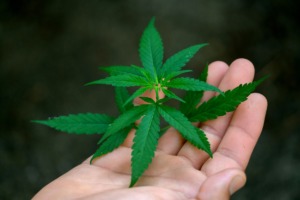
One must have so many questions about Cannabidiol and its source plant–the Cannabis, which is known to have caused certain addiction, and is banned in most countries worldwide. Before we go directly to what Cannabidiol is, what do we know already about the plant? Allow me to enlighten you a little bit.
There has been a lot of talk about Cannabis as an effective way to treat cancer globally and more recently in Australia. However, there have also been a lot of misunderstanding, or misinformation about which is accurate or not. Sadly, it is partly because of groups and government propagating false claims in order to promote a different substance, or just mere dislike for the cannabis plant. Pharmaceutical companies have financial interests in tight control and restriction of prescription and some still consider it a recreational drug which should be avoided at all cost.
Let us educate ourselves about the truths and myths surrounding the cannabis plant.
Cannabis has three distinct variations – the cannabis ruderalis, the cannabis indica, and cannabis sativa. Cannabis has been a useful plant for its wide range of industrial and medical applications from its fiber, and oils, being refined into products such as wax, cloth, paper, rope, fuel, and many more. Unfortunately, its cultivation has been rendered strictly regulated due to its use as a recreational drug and THC content having effects on the brain.
Today hemp oil and hemp seed products are available in health food shops for sale, although technically they are not for internal consumption. So if you are buying these in Australia, be sure to only use them externally for creams or ointments to be sure you are safe legally! Hopefully soon laws will move forward with the rest of the world with hemp products!
CBD oil can only be found in high-growing varieties of cannabis, called hemp. Hemp has eighty five different chemical substances known as cannabinoids. CBD oil, or cannabidiol, is one of these substances and makes up for 40% of the extracts. It is the second most abundant compound that is within the plant.
If CBD comes is the second most abundant constituent in the plant, then what is the most abundant substance? It is the intoxicating, albeit illegal, substance known as tetrahydrocannabinol, or simply, THC; and this is what causes users to get “high” due to its psychoactive properties. Psychoactive chemicals directly affect the central nervous system by entering the brain through the bloodstream. They are often used solely for recreation, causing addiction to the euphoric feeling and some harmful psychotropic side effects.
Many people have confused the two, due to misinformation as word got passed around. THC and CBD are different from each other. CBD cannot get people high. THC can. Even if one smoked or ingested hemp that is high on CBD but had even the smallest traces of THC, it would still be impossible to get “high”. So much so for CBD oil products that has zero amounts of THC.
Cannabidiol is extracted in oil form, and is often found mixed together with other hemp oil extracts in various concentrations.
How about legalities of CBD in Australia?
CBD is legal all over the world (but remember in Australia it is not for internal consumption). There might have been misinformation on CBD, partly because of its close resemblance to THC. Until recently, scientists thought that THC was formed by, or came from CBD. Hence, the strict regulations on the use of CBD.
The truth is, CBD is not in any way related to the chemical chain that forms THC, even though they could share some traits, but that’s all there is to it. Unlike THC, CBD is 100% safe for consumption in any amount or concentration. There isn’t a single study that wouldn’t show CBD to cause purely desirable effects. It has even shown to be effective in protecting against the negative effects of THC! CBD has recently become accepted to be a means of relaxation and achieving calm. Unlike the potentially toxic THC, CBD has strong antioxidant properties. Strong enough that it has been considered as a cancer treatment.
Let’s back up a bit through history. THC was the first phytocannabinoid to be discovered, and have had more extensive studies compared to CBD. As mentioned previously, it is strongly psychoactive and intoxicating even in small quantities. It can change one’s behavior, cause that person to lose control over himself. However, THC does have some medical uses including its use as a moderate-strength pain-reliever, and as a treatment for some of the symptoms of a few diseases such as AIDS, and for the effects of chemotherapy in cancer patients. This has caused THC to become more and more prescribed for legal medical reasons. However, there have been significant correlations between the long-term use of THC and some psychiatric disorders, such as schizophrenia, depression, and psychosis. This is part of the reason for the confusion of the safety and concern for the plant as being dangerous.
In short, while THC does have some medical purposes, it can be abused as a drug, and has harmful side effects if used extensively. CBD is safe and cannot be used as a recreational drug due to its inability to make users high.
A word of caution, before deciding to take CBD on your own:
Currently in Australia the legalities of CBD oil and cannabidiol treatment is limited. Oncologist can help guide patients with paperwork but the uses are very limited and heavily bound by legal paperwork. Since each patient has their own unique body chemistry, and that research is still ongoing for the many applications of CBD, it is strongly encouraged to seek guidance from a registered naturopath for herbal medicine, dietary assistance and nutritional medicine which can be combined to support cancer treatment in Australia.
Questions? Have a question about similar legal herbs in Australia to help with natural cancer support? Get in touch now!
